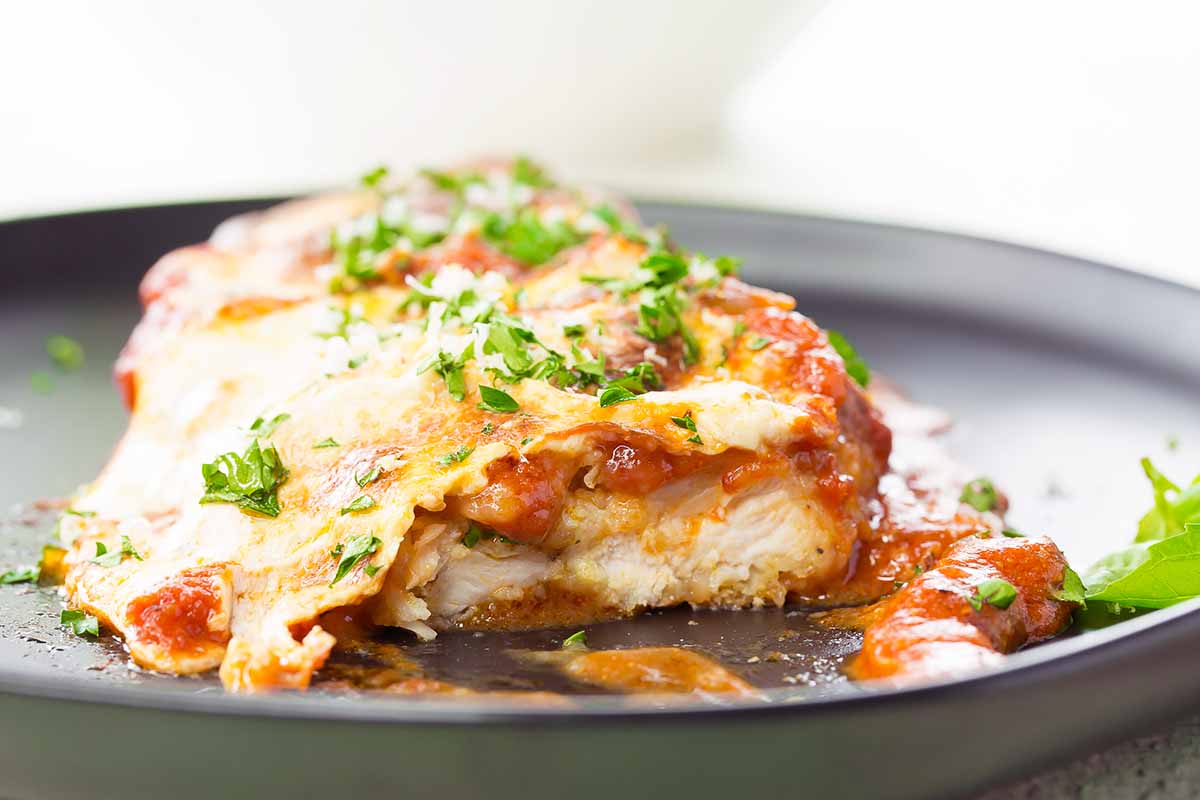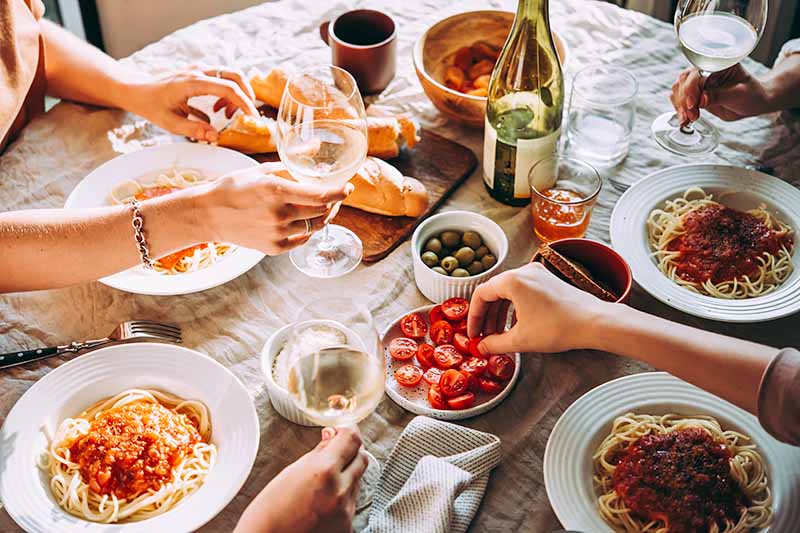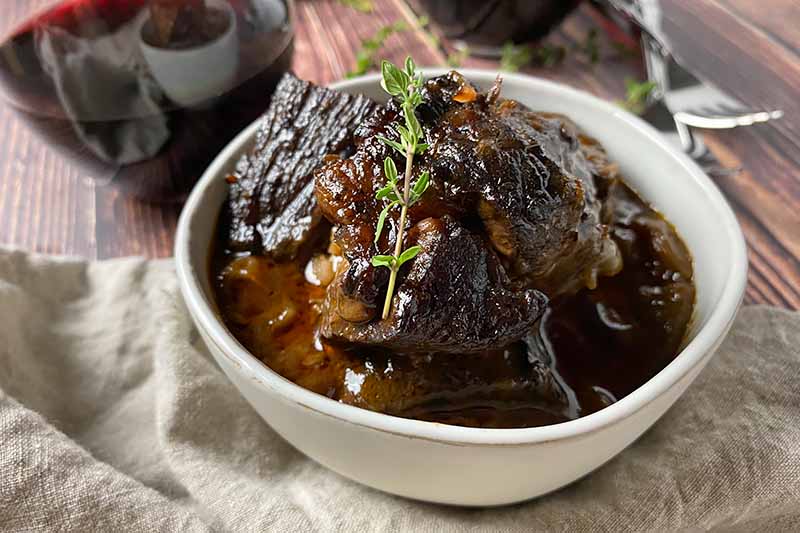For those of you who don’t know me very well, I have this thing about balsamic vinegar.
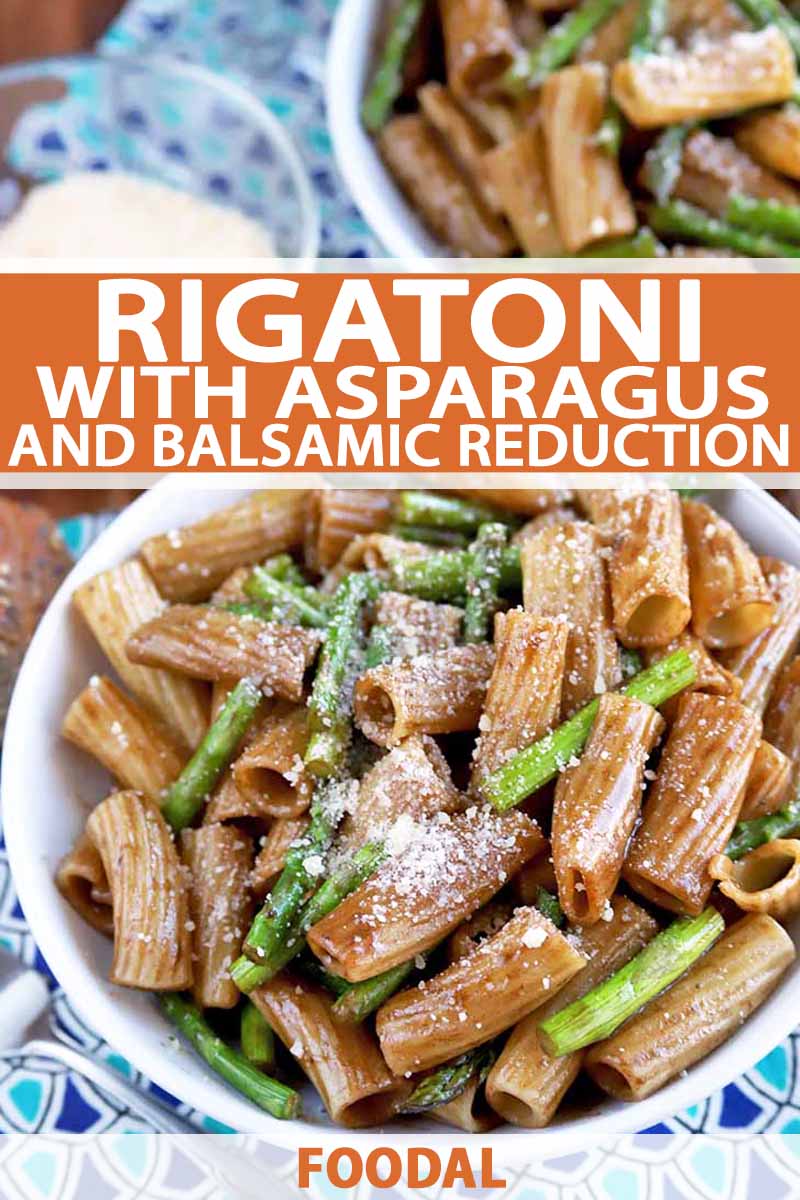
I first became aware of balsamic vinegar in the best place to discover it – Italy.
There was a little restaurant across the street from my school in Rome where I would go before my evening class, to indulge in a glass of wine and a big bowl of spaghetti.
Hey, international law class is better with a bit of a buzz, okay?
Anyway, they served this crusty, delightful bread with olive oil and balsamic vinegar to dip it in. This was the first time I had eaten bread with balsamic and actually liked it, so it was a big deal in my world.
Normally, I hated the combination because the vinegar was too tangy or acidic. But this vinegar and oil combination was perfect – just the right ratio so you got a hit of tanginess without it overpowering the smooth oil and hearty bread.
From then on I was hooked, and I brought that obsession back home with me.

Upon returning to the US, I was broke. My dinner would often be comprised of a loaf of French bread split with my roommate, over a shared plate of oil and vinegar.
Yeah, not exactly healthy. But it filled us up while we watched crappy TV and avoided our homework.
Balsamic vinegar is one of those ingredients I absolutely adore, and this pasta dish has become one of my recent obsessions.
Alas, my husband does not share the same passion, so this is one of those meals I make when I’m cooking just for myself, or a few close friends.
If you love that tanginess of the vinegar with the subtle sweetness that’s brought out when it’s reduced to a syrupy consistency, you are going to become as obsessed as I am with this dish. The balsamic pairs so well with pasta, but the punch of fresh asparagus lifts the entire dish up so it doesn’t feel so heavy.
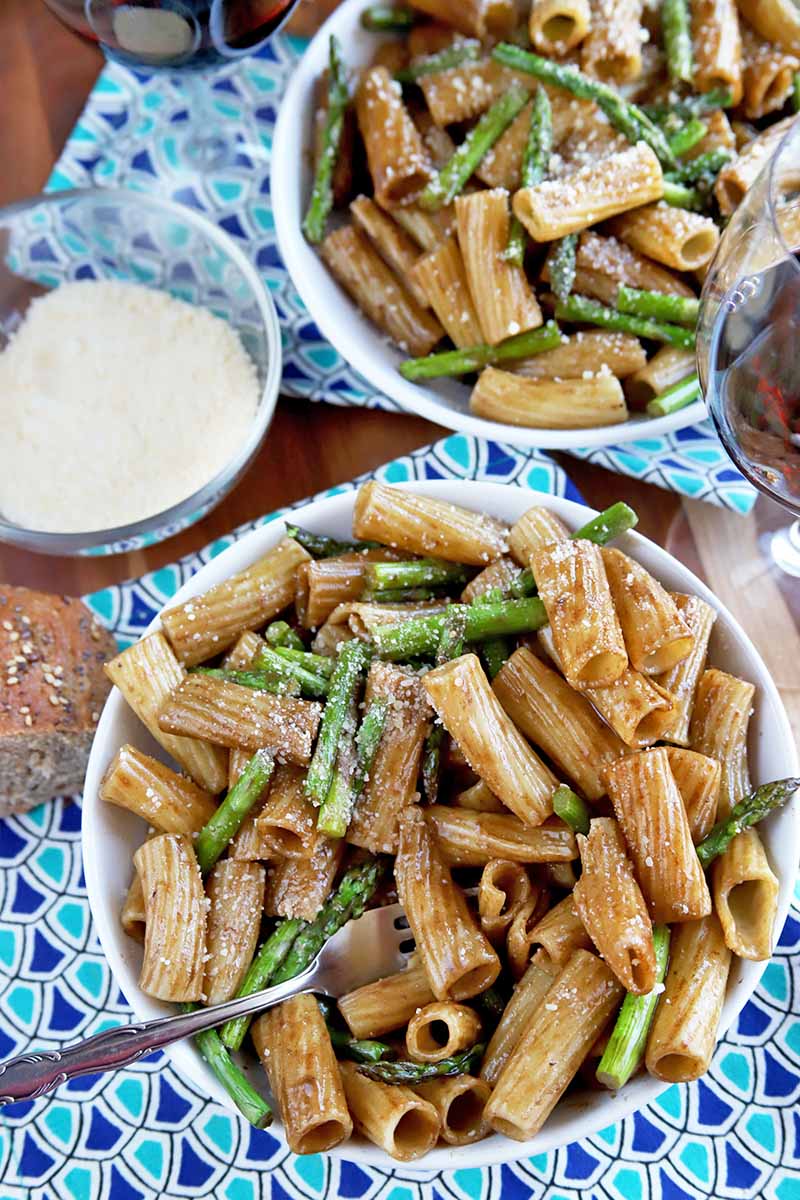
I love this recipe because it comes together easily, and can accomplish multiple things at once without becoming overwhelmed.
The key is that most of the steps involved take about the same amount of time. Once you get the water boiling, add the pasta, and put the asparagus in the oven to roast, you just need to reduce the vinegar while the other elements continue to cook on their own.
I know it seems like there are a lot of things going on at the same time to make this dish, but you don’t need to worry about actively watching everything. The pasta boils away, and the vegetables roast without any extra coaxing.
You just need to make sure the vinegar doesn’t reduce too quickly, or too much.
After everything is cooked and the sauce is finished with the final ingredients, you throw it all together. That’s it.
Garnish with some grated cheese and you can have dinner on the table in only 30 minutes.
Print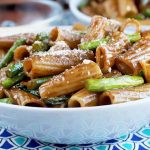
Rigatoni with Asparagus & Balsamic Reduction
- Total Time: 30 minutes
- Yield: 4 servings 1x
Description
Skip the red sauce and excite the palate on this week’s pasta night with our rigatoni with asparagus and balsamic, a tangy way to enjoy seasonal vegetables.
Ingredients
- 16 oz rigatoni pasta
- 1 lb fresh asparagus, washed and trimmed
- 1 Tbsp olive oil
- 3/4 tsp salt, divided
- 1/2 tsp freshly ground black pepper, divided
- 1/2 cup balsamic vinegar
- 4 Tbsp unsalted butter, cut into small pieces
- 1/2 tsp honey
- Freshly grated Parmesan cheese
Instructions
- Preheat oven to 400˚F.
- Cook pasta in salted boiling water according to package directions. Drain well and place in a large serving bowl.
- Meanwhile, cut asparagus into 1-inch-long pieces. Place on a baking sheet and drizzle with olive oil. Sprinkle with 1/2 teaspoon salt and 1/4 teaspoon pepper. Toss to coat. Place in the oven on the middle rack and roast for 8-10 minutes.
- While asparagus and pasta are cooking, place a medium-sized heavy-bottomed skillet over medium heat. Add balsamic vinegar and cook, stirring frequently, until reduced by almost half and thickened slightly.
- Stir butter and honey into vinegar reduction. Season lightly with 1/4 teaspoon salt and 1/4 teaspoon pepper. Cook another minute, until butter is melted and incorporated completely.
- Add cooked asparagus to serving bowl with pasta. Pour balsamic sauce over the top and toss well to coat. Serve immediately with freshly grated Parmesan cheese on top.
- Prep Time: 10 minutes
- Cook Time: 20 minutes
- Category: Pasta
- Method: Stovetop, Roasting
- Cuisine: Italian
Keywords: balsamic vinegar, balsamic reduction, rigatoni, macaroni, asparagus
Cooking By the Numbers…
Step 1 – Wash Asparagus, Cut Butter, and Measure Remaining Ingredients
Wash the asparagus well and trim the ends off.
Cut the unsalted butter into small pieces.

Measure out the remaining ingredients as listed in the ingredients list.
When you are choosing your balsamic vinegar, I recommend selecting a high-quality bottle produced in Modena or Reggio Emilia, regions where certification is required. Look for “D.O.P. on the label to indicate manufacture in one of these protected regions of Italy using traditional methods.
Traditional balsamic vinegars are aged for 12 to 18 years, this will also be noted on the bottle. These types tend to be more expensive, but they yield the best flavor.
If you are looking to save a few dollars, try a commercial-grade balsamic vinegar made in Modena. These are less expensive since they are aged for a shorter period, but they still provide a sweet and sour flavor that’s ideal for sauces and marinades.
Preheat your oven to 400˚F.
Step 2 – Cook Pasta
Bring a large pot of salted water to a boil. Add pasta and cook according to the directions on the package. You can also prepare this type of pasta in the electric pressure cooker.

Drain well in a colander, and transfer the pasta to a large serving bowl.
If you prefer bigger, bolder textures for this dish, and if you want to go completely homemade, consider making our recipes for potato gnocchi or spelt ravioli to replace the rigatoni. No regrets here – they’ll both be delicious variations!
Step 3 – Roast Asparagus
While the pasta is cooking, cut the asparagus into 1-inch pieces. Place on a baking sheet and top with olive oil, 1/2 teaspoon salt, and 1/4 teaspoon pepper. Toss to coat the vegetables evenly.

Place the baking sheet on the middle rack of the oven and roast for 8-10 minutes.
For more detailed information on how to cook asparagus, check out our tutorial. Instead of roasting, you can also cook the spears in the pressure cooker.
Step 4 – Make Balsamic Sauce
Place a medium-sized heavy-bottomed skillet over medium heat. Pour in the balsamic vinegar and reduce, stirring frequently.
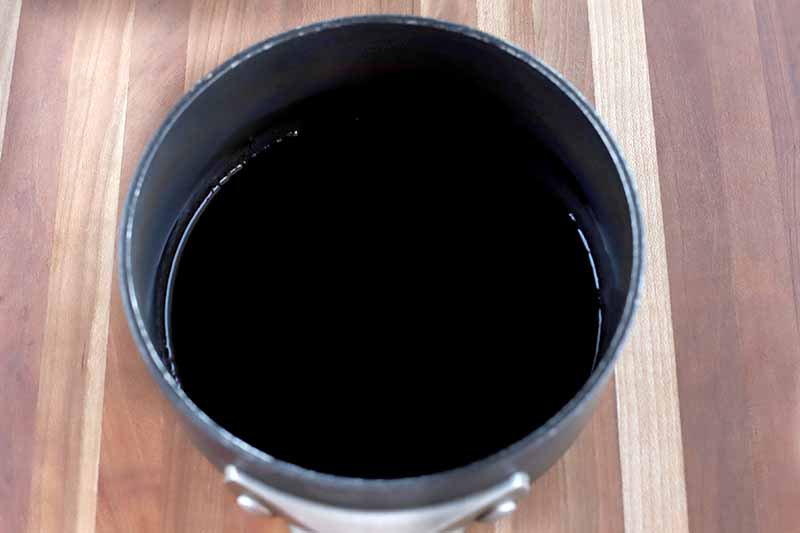
The liquid should be reduced by half and thickened slightly after about 5 minutes. Stir in the butter and honey.

Season with 1/4 teaspoon salt and 1/4 teaspoon pepper. Cook for another minute or so while stirring continuously, until the butter is melted and fully incorporated. Remove from the heat.
Step 5 – Finish Pasta
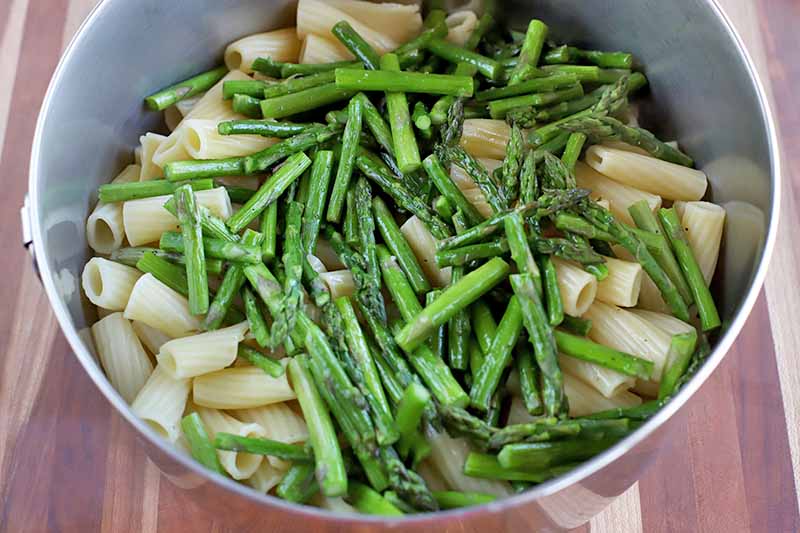
Add the asparagus to the serving bowl with the rigatoni.

Pour the balsamic reduction sauce over the top, and toss well to coat.
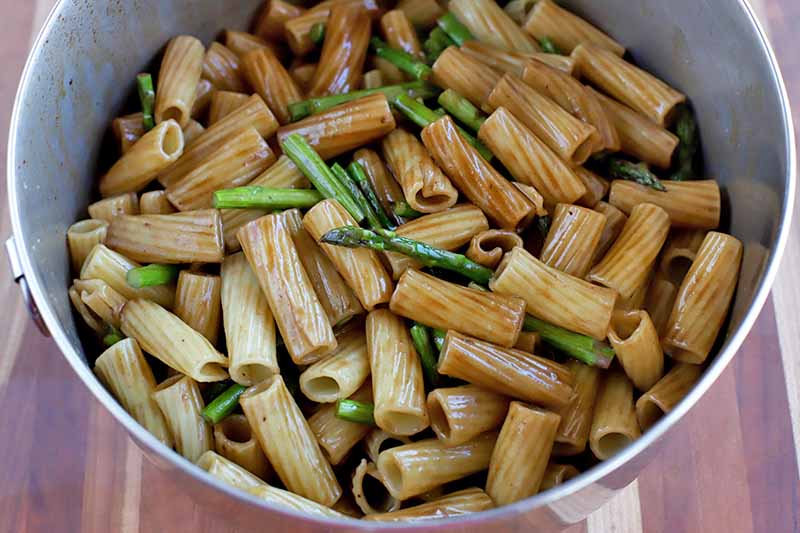
Serve immediately in bowls with freshly grated Parmesan cheese on top.
Only One Question Remains: Red or White Wine?
When it comes choosing the right wine to pair with this dish, I like to lean towards one in particular:
That wine is Sangiovese.
It is known to pair well with different styles of balsamic vinegar, so you can feel confident no matter what kind of balsamic you are using. The wine is fresh and fruity, so it really goes well with this pasta dish that’s perfect for spring when asparagus is in season.

Wine can be difficult to pair with asparagus, especially when it’s a more acidic variety like Sangiovese. but the standout flavor of the balsamic is what really makes this dish flavorful and unique. The powerful sweet and sour notes are the ones that you are looking to bring out, and that’s why this is my favorite wine recommendation.
For more veggie-packed recipes to add to your pasta night rotation, check these out:
- Pasta with Shaved Brussels, Leeks, and Pine Nuts
- Angel Hair with Braised Kale
- Baked Penne with Zucchini, Sausage, and Feta
- Caramelized Eggplant Pesto Pasta
- Cheesy Charred Broccoli Pasta Bake
- Rigatoni Di Gregorio
Would you drink Sangiovese with this dish, or will you choose a different wine? Tell us in the comments below, and be sure to come back to rate the recipe if you loved it!
Photos by Meghan Yager, © Ask the Experts, LLC. ALL RIGHTS RESERVED. See our TOS for more details. Originally published on May 9, 2011. Last updated: October 30, 2021 at 19:49 pm.
Nutritional information derived from a database of known generic and branded foods and ingredients and was not compiled by a registered dietitian or submitted for lab testing. It should be viewed as an approximation.
About Meghan Yager
Meghan Yager is a food addict turned food and travel writer with a love for creating uncomplicated, gourmet recipes and devouring anything the world serves up. As the author of the food and travel blog Cake 'n Knife, Meghan focuses on unique foodie experiences from around the world to right at home in your own kitchen.


